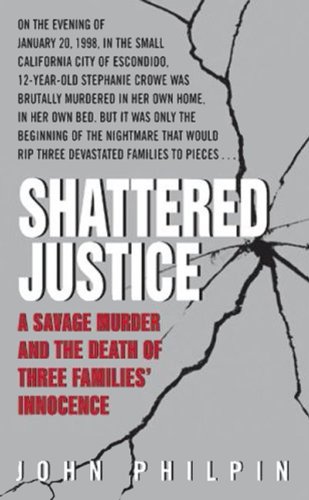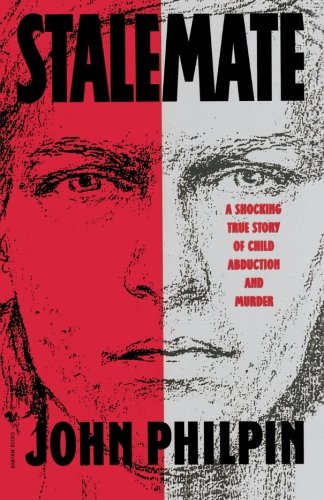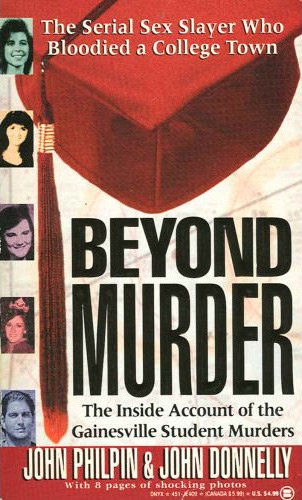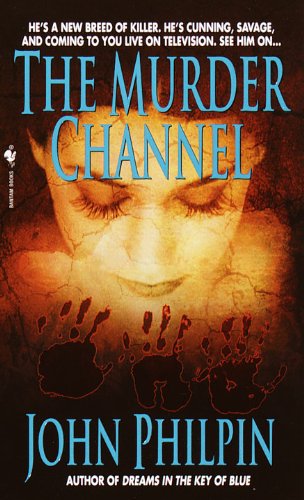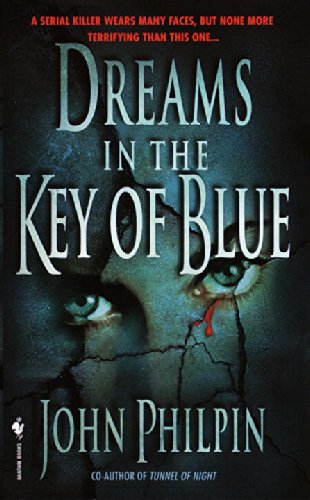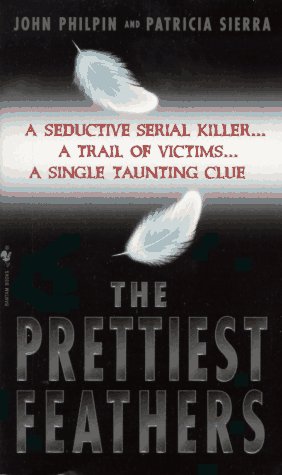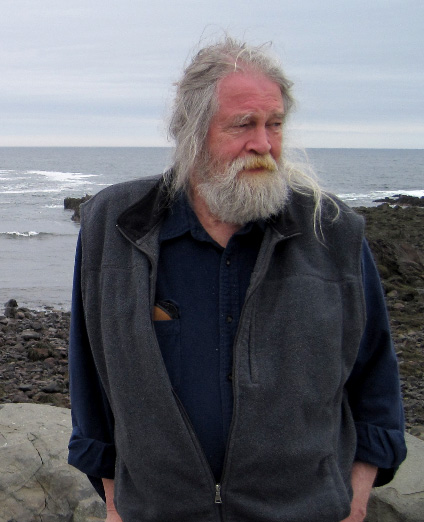
About John Philpin
An independent criminal profiler and a retired psychologist with an international reputation as an expert on violent behavior, John Philpin has appeared on Unsolved Mysteries, America’s Most Wanted, 20/20 Downtown, Inside Edition, and CBC’s As It Happens, and has served as a guest commentator on Court TV’s Prime Time Justice.
Philpin’s published nonfiction works include Shattered Justice (Harper Collins), about the murder of 12-year old Stephanie Crowe; Stalemate (Bantam), about a series of child abductions and murders in the San Francisco Bay area; and Beyond Murder (Onyx/Penguin Books), investigating the Gainesville student murders.
Philpin has also written several novels, including Dreams in the Key of Blue, The Murder Channel, The Prettiest Feathers, and Tunnel of Night, all published by Bantam, as well Bad Dog, from GenPop Books.
A recipient of numerous awards for contributions in murder investigations, Philpin’s forensic work was featured in Philip E. Ginsburg’s Shadow of Death (Scribner), the investigation of a series of murders along interstate highway corridors of Vermont and New Hampshire in the 1980s.
Philpin holds degrees in English, clinical psychology, and forensic psychology from Harvard and Goddard College.
BOOKS: NONFICTION
Shattered Justice
Paperback
320 pages
Avon, 2006
A family’s horror— one child murdered . . . another destroyed.
The Crowes’ neighbors in the peaceful middle class community in San Diego’s North County were shocked by the savagery of the crime — a young girl murdered, stabbed repeatedly, in her own bed in the dead of night. The lack of any evidence of forced entry led the Escondido police to their inevitable conclusion: someone in the family was responsible for 12-year-old Stephanie Crowe’s slaying.
The investigation quickly zeroed in on the victim’s older brother, Michael, and two teenage friends—three loners who enjoyed inhabiting dark fantasy worlds of quests and violence. Through efficient, by-the-book police work, the boys were broken down and ultimately confessed. The only problem was the detectives had gotten everything wrong . . .
Shattered Justice is the riveting and disturbing true account of a horrific tragedy and the terrible crime that followed—a nightmare of four innocent lives shattered, one by a killer’s blade, three by obsession and twisted law.
Stalemate
Paperback
384 pages
Bantam, 1997
Is a suspected child abductor laughing in the faces of the police and the victims’ families?
For years, little girls have been disappearing from the streets of the San Francisco Bay Area. Their bodies have never been found. One man ties the cases together. He contacts the police. He helps search for the missing children. He offers support and love to the grieving families.
Is he guilty? Or, is he the victim of his own eccentricities?
Timothy James Bindner has appeared on talk shows, attended victims’ memorials, and offered meticulously detailed theories of the crimes themselves. Yet, in spite of years of intensive investigation, surveillance, and interrogation, Bindner has never been charged. Steadfastly maintaining his innocence, Bindner has infuriated the authorities with his public and outspoken challenges to make their case or leave him alone.
This inside account—featuring the words of Bindner himself—takes us into the mind of a suspected child abductor as well as the complex realm of modern forensic investigation. A shocking indictment of our flawed legal system, Stalemate asks the even more disturbing question of whether Timothy James Bindner is playing a sinister game of cat and mouse—and getting away with it.
Beyond Murder
Paperback
416 pages
Onyx, 1994
This is the story of Danny Rolling, the serial sex killer responsible for five brutal murders in Gainesville, Florida in 1990. Respected psychological profiler, John Philpin, and veteran journalist, John Donnelly, detail the five murders and their aftermath in this gripping narrative. Optioned for a TV mini-series. 8 pages of photos.
BOOKS: FICTION
Bad Dog
Paperback
216 pages
GenPop Books, 2011
The time is 1968. The time is the present. Bad Dog is the fictional memoir of a first-generation American, a writer disillusioned with the last half century of his country’s history. He is a kid who graduated first from Boston’s Roxbury streets then from Harvard, a man in his sixties watching Vietnam replayed in Iraq, a draft dodger from a family of veterans, a young man whose promise to a child to find her missing friend is more important than his flight to Canada to avoid trial for draft evasion.
With a double homicide and kidnapping at the center of Bad Dog, the book certainly qualifies for the genre of crime novel, but this “fiction” from one of America’s first independent criminal profilers also asks: What are the biggest crimes, and who perpetrates them?
Philpin’s most autobiographical work to date, Bad Dog takes the reader from a backwoods Vermont homicide into a tale about war and the lies that have led us into wars, a tale of living through two bouts of national madness.
PRAISE FOR BAD DOG
Bad Dog is a remarkable novel in more ways than one, starting with the dialogue. It’s smart and fast and real, bare of explication, the kind of talk screenwriters aim for. Philpin, though, does something I’ve never quite seen before, embedding the distilled dialogue in a narrative that almost seems an opposite language a wildly diffusive monologue inside the teller’s brain, ranging unrestricted through memories, riffs on history, outbreaks of anger, the lost dreams of America. On the way to breaking the standard rules of fiction, Bad Dog delivers something that lies at the heart of every novel our need to make sense of the world.
— Josephine Humphreys, author of Nowhere Else on Earth.
Bad Dog is a fictional memoir about crime and life by an author who understands both. At the center of the tale is a double murder and the abduction of a child, but the biggest crimes of all are the lies perpetrated by a government bound and determined to wage war. Head down the rabbit holes of Vietnam and Iraq with a trippy, disillusioned guide who refuses to dance to the drumbeats of death. You’ll feel compelled to read non-stop but forced to pause to contemplate the truths on each page. An unforgettable read.
— Diane Fanning, author of ten works of true-crime and five mystery novels including Twisted Reason, the most recent in the Lucinda Pierce series.
The Murder Channel
Paperback
336 pages
Bantam, 2001
You have a prime-time date with a brutal murderer … right in your own living room.
Lucas Frank knows the cost of hunting human monsters. That’s why he left Boston for the peace of the Michigan woods. But a tantalizing case has lured the forensic psychiatrist back to work — and straight into the path of a cold-bloodedkiller.
Felix Zrbny was just a teenager when he went on a murder spree that left three women dead. Now, after spending fifteen years locked away, Felix has escaped — and he is determined to finish what he started all those years ago.
Lucas races to untangle the mysteries of Felix’s mind as the ratings-hungry press steps in to make Felix its own macabre media darling. They track his every move and broadcast his bloody reign of terror for the whole world to see. And all the while, behind the scenes, someone is orchestrating the moment when the killer and the hunter will at last come face-to-face.
They say everyone gets their fifteen minutes of fame. For Felix Zrbny, it’s fifteen minutes of infamy. The clock is ticking — and he’s going to make sure that every minute counts.
Dreams in the Key of Blue
Paperback
368 pages
Bantam, 2000
Every serial killer fits a profile, follows a pattern, makes a mistake. Until now…
Six years ago forensic psychiatrist Lucas Frank “retired” from hunting serial killers. But someone wants him back in the worst way. It begins with a brutal triple homicide in the picturesque Maine town of Ragged Harbor. And it won’t stop there. Suddenly Lucas is forced to do what he swore he would never do again: enter the twisted mind of a killer who enjoys murder. Only this time Lucas must hunt a psychopath whose pattern of behavior defies all logic.
A killer who can strike anyone, anywhere, anytime. The FBI is helpless. And even Lucas is baffled at the contradictory clues and taunting hints left behind.
Lucas Frank has met his match. That’s why he was called out of retirement.
But does someone want him to catch a killer — or to be the ultimate trophy?
Tunnel of Night
co-authored with Patricia Sierra
Paperback
384 pages
Bantam, 1999
A sequel to The Prettiest Feathers, this novel continues the story of forensic scientist Dr. Lucas Frank and his NYPD detective daughter, Lane. The serial killer they thought was dead is back, and he’s on a chilling spree that begins with the murder of his own sister in Florida, and continues throughout the country. He won’t stop until he arrives at the FBI Behavioral Studies Unit, where he plans to teach them a lesson in criminal behavior that they’ll never forget.
PRAISE FOR TUNNEL OF NIGHT
The real-world backgrounds of renowned forensic psychologist Philpin and former private investigator Sierra shine through this sequel to The Prettiest Feathers. Narrated in three alternating voices — semiretired forensic scientist Lucas Frank; his NYPD detective daughter, Lane; and cunning murderer John Wolf — the thriller offers a scary glimpse into the mind of a man who kills for kicks. Philpin and Sierra intertwine a Cliffs Notes-like history of serial killers with a puzzling plot scattered with many dead bodies and culminating in a showdown between Wolf and his nemesis, Frank.
— Publishers Weekly
The Prettiest Feathers
co-authored with Patricia Sierra
Paperback
336 pages
Bantam, 1997
Sarah Sinclair was the perfect victim — she wanted to die.
When a darkly enigmatic man approaches her in the small antiquarian book store where she works, Sarah is drawn into a slow dance toward death. A death she couldn’t stop even if she wanted to. She is stalked, yet blindly charmed. And when he kills her, seductively, silently, she smiles.
Sarah’s ex-husband, police officer Robert Sinclair, is the first to find her body and he calls it in to the one officer who will understand: his ex-mistress Detective Lane Frank. As Lane struggles to follow the increasingly elusive trail of clues, another macabre trail emerges–of bodies, coldly, tauntingly abandoned.
As the FBI becomes involved, Lane must fight to retain her hold on the case and her grip on Robert Sinclair, whose grief sinks him further into an alcoholic haze of despair and desperation. As a calculating last resort, Lane calls on the one man who can help her stop the killing, a forensic psychiatrist who had stepped too close to the edge, crawled too deeply into the mind of evil. She calls a profiler who has dropped out of society, living simply in a cabin in the woods far away from the madness that called to him, threatened him. Lane calls her father.
As they work together, Lane and her father slowly craft an image of a killer so brilliant he has murdered perhaps hundreds and never been caught, so cold that he cannot relinquish his power. With a tortuous trail of names and faces, the killer has insulated himself from those who would repress him and his need to kill, a need rooted in a disturbing, horrifying childhood.
And as Lane and her father grow closer to finding the killer, the game becomes personal between two men on opposing sides of evil, men on the edge of an abyss of madness, from which there is only one escape–death.
